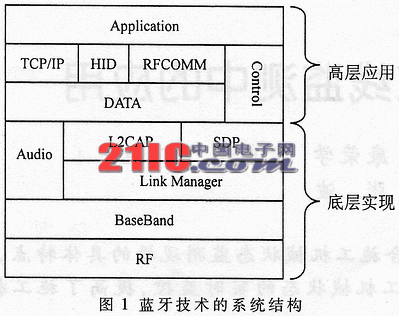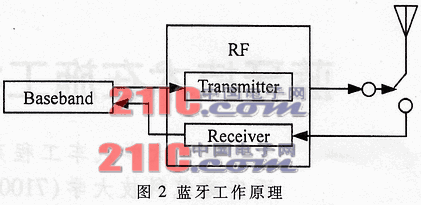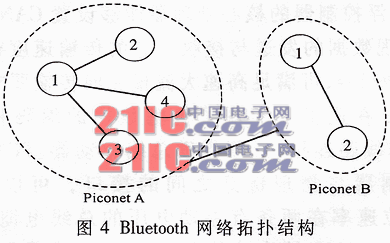Abstract: Based on the discussion of Bluetooth technology and its principles, combined with the specific characteristics of the construction machinery condition monitoring site, a new type of construction machinery condition wireless monitoring system is proposed, which realizes the real-time monitoring of the construction machinery condition and improves the construction. The level of mechanical intelligence.
Online condition monitoring is also called airborne fault prediction. It distributes high-reliability sensors to the relevant parts of the construction machinery like antennas, directly obtains the working condition parameters of each operating part, so as to analyze, process, and control the construction progress in real time. To improve the quality of construction. The current development direction of construction machinery is intelligent, which puts higher requirements on the computer system's information collection, complex signal processing and control capabilities. The Bluetooth chip can be used to reliably transmit the data collected by each sensor without cables, and can use non-airborne equipment (such as high-end microcomputers and well-functioning software) to process the collected signals in a complex and effective manner, thereby reasonably controlling the entire construction process . 
1 Introduction to Bluetooth technology
Bluetooth (Bluetooth) technology is a short-range wireless communication standard, which was jointly formulated by the Special Interests Group (SIG, Special Interests Group) composed of five major companies including Ericsson, Intel, Nokia, Toshiba and IBM. The purpose of SIG's Bluetooth technology is to achieve wireless communication with a maximum data transmission rate of 1Mb / s (effective transmission rate of 721kb / s) and a maximum transmission distance of 10m, and form a uniform short-range wireless communication standard in the world. Bluetooth technology can provide a low-cost, low-power wireless access method. It is considered to be one of the major developments in the field of wireless data communication in recent years. Its program is written in a 9mm & TImes; 9mm microchip [1].
The Bluetooth system is generally composed of four functional units: an antenna unit, a link control (firmware) unit, a link management (software) unit, and a Bluetooth software (protocol) unit.
1.1 System structure of Bluetooth technology [2 ~ 4]
The system structure of Bluetooth technology is shown in Figure 1. It can be seen from Figure 1 that the Bluetooth architecture consists of two parts, namely: the bottom protocol part and the high-level application protocol part. The following is a rough introduction to the two parts. 
1.1.1 Underlying protocol
As the basis of Bluetooth technology application, the underlying protocol plays a very important role. At the current level of technology, some protocol functions can be performed by a small chip. These functions mainly include:
Radio / RF: channel definition of frequency band and signal transmission and reception;
BaseBand: implements some baseband protocols and other underlying link functions;
Link Manager (LM): used for link establishment and management;
L2CAP: is the abbreviation of Logical Link Control and AdaptaTIon Protocol, which realizes the functions of high-level protocol multiplexing, package assembly and splitting;
SDP: It is the abbreviation of Service Discover Protocol. It discovers and recognizes the services provided by the underlying devices so that high-level applications can call them.
1.1.2 High-level application protocol
The high-level application protocol mainly includes the following application protocols:
RFCOMM: is a subset of ETSI TS 07.10 standard;
TCP / IP Over Bluetooth: TCP / IP services can be supported through this protocol;
IrOBEX Over Bluetooth: This protocol provides Bluetooth and infrared transmission compatibility;
Files Transfer Over Bluetooth: FTP service can be supported through this protocol.
It is worth noting that there is also a high-level application protocol that can support WAP (Wireless ApplicaTIon Protoc01) applications, through which it can effectively implement a wide-area mobile network. 
According to the above discussion, in general, a complete Bluetooth application solution is composed of software and hardware, of which the hardware part includes RF, Baseband and Link Manager, and the software part includes the functions above L2CAP.
1.2 Working principle
Bluetooth technology works in the 2.4GHz ISM (I-Industry; S-Science; M-Medical) frequency band which is universally used worldwide, and the data transmission rate is 1Mb / s. In theory, the technology running in the 2.4GHz ISM band can successfully achieve wireless connection between instruments within 30m, and the data transmission rate can reach 2Mb / s; if a power amplifier is added, the effective range of the transmission distance can reach 100m. Bluetooth technology uses "Plug & Play" technology, that is, any instrument and device that uses Bluetooth technology (referred to as "Bluetooth device") once it finds another Bluetooth device, it can immediately establish contact with it without the need for users to make any settings. It can be said to be "connected and used" [5]. Therefore, Bluetooth technology is more suitable for short-range wireless data transmission.
As mentioned earlier, the main modules of Bluetooth technology in hardware are: baseband and radio frequency (RF), as shown in Figure 2.
Among them, the Transmitter module performs high-frequency processing on the information from the Baseband and then transmits it by the antenna. In this process, due to the use of fast frequency hopping and forward error correction schemes to ensure the stability of the link and the reliability of transmission, so Its anti-interference ability is very strong; contrary to this process, the Receiver module processes the data received from the antenna and transmits it to the host through Baseband. Therefore, any two devices that support the Bluetooth standard can transfer information within a short distance without using a cable link, and its power consumption is very low.
2 Practical application
The traditional online status monitoring system, whether it is an active or microcomputer automatic monitoring system, needs to transmit the measured value of the online signal provided by each sensor to the microcomputer through the corresponding wired cable and compare it with the standard value of the microprocessor memory. This judges whether the condition is good. Due to the limitations of various working conditions, high reliability and simplicity are required for airborne equipment (through the use of a single-chip microcomputer to process this information), so that only on-site construction signals can be processed simply, and a comprehensive and systematic analysis is not possible , Possible misdetection and missed detection of various potential hidden dangers, causing unnecessary economic losses; at the same time, the current operation management lacks a unified construction process model, no complete construction operation records, and the construction progress and quality cannot be well controlled . It can be seen that the traditional online condition monitoring system needs improvement. 
2.1 Transformation of traditional monitoring equipment based on Bluetooth technology
Through the above analysis, we know that there are some shortcomings in the implementation of the traditional online status monitoring system. If Bluetooth technology is applied to this field, this problem can be solved to a great extent. One of the more basic methods is to transform traditional sensors, data collectors and other devices using Bluetooth technology to make them capable of wireless information transmission. Figure 3 shows an example of the functional structure of a wireless sensor.
It can be seen from Figure 3 that the new sensor with this structure, because of the use of wireless transmission instead of wired cable connection, makes the adjustment and reorganization of the monitoring network very convenient in specific applications; and for some special occasions, such as When the high-speed rotating equipment is running, it is difficult to measure some key parts using traditional wired methods, and the new sensor based on a small Bluetooth chip can be installed and measured at any location, and using its wireless advantages, it can be carried out Mobile monitoring; in harsh environments such as high temperature and high corrosion, the reliability of wireless monitoring is much higher and the cost is lower. All in all, a monitoring system with a similar structure will have a very large application space.
2.2 Application of Bluetooth technology in construction machinery online monitoring
Bluetooth technology can support object-to-object communication. It is based on a low-cost, short-range wireless connection and establishes a specially connected short-range radio technology for the communication environment between fixed and mobile devices. Using Bluetooth technology, the online monitoring data of the sensor can be transmitted to the computer for processing, and the information processed by the computer can be transmitted to each device via Bluetooth technology.
Two communication modes, Point to Point and Point to MulTI-Point, are supported between devices based on the Bluetooth protocol. Correspondingly, there are also two network topologies composed of Bluetooth devices. They are called Piconet and Scatteret, as shown in Figure 4. 
All device units in a piconet share the same channel, and each Bluetooth device can communicate with up to seven devices simultaneously. And each device may also be a component of other piconets. The decentralized network is a functional unit composed of multiple piconets built on the basis of piconets. These piconets can communicate with each other. The identification of each piconet is determined by its own frequency modulation frequency.
On the basis of adopting Bluetooth technology and transforming the traditional monitoring system, combined with the increasingly developed network technology, a new type of distributed wireless state monitoring system is proposed for the specific application characteristics of construction machinery, as shown in Figure 5.
This solution aims at the specific characteristics of the construction machinery condition monitoring site, focusing on the application of Bluetooth technology and a new wireless data acquisition system. Under the requirements of a certain working environment, sensors and data acquisition systems with wireless communication capabilities should be used as much as possible to avoid the use of wired cables. Among them, for all sensors on each monitored construction machine, a piconet can be formed together with the data collector, and all the piconets can also form a decentralized network that can cover the entire site (as shown in Figure 5). It can be seen that the data collector belongs to multiple piconets at the same time, and can work together with the monitoring units of each unit in the network to collect real-time monitoring information, and then transmit the information to the database through the LAN access point in the form of wireless communication Server. At the same time, after paying a certain fee, Web users can share these data through the Internet, so as to realize the remote sharing of experimental data.
Sata 15P Connector,Sata Computer Connector Socket,Sata Disk Connector,Sata Hard Disk Connector
Dongguan ZhiChuangXing Electronics Co., LTD , https://www.zcxelectronics.com